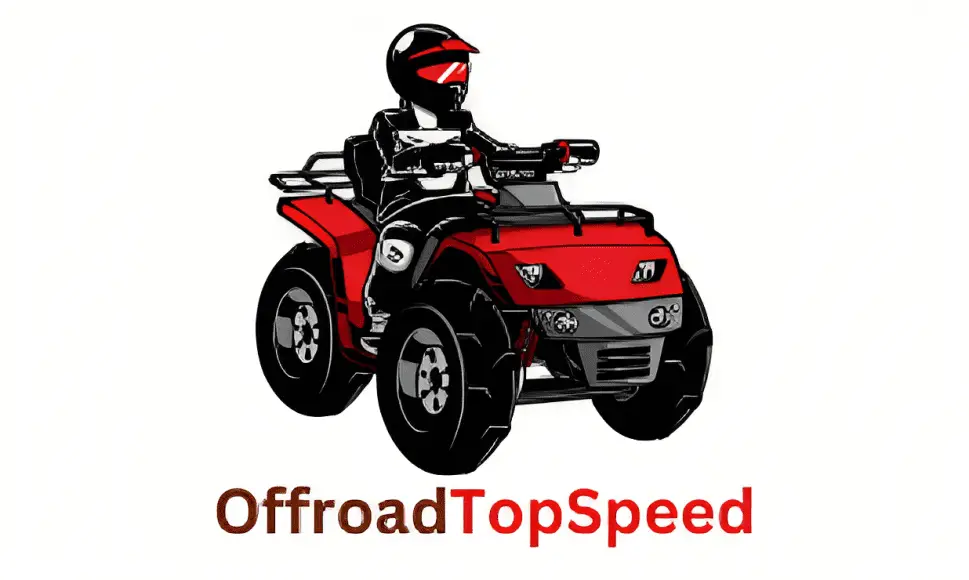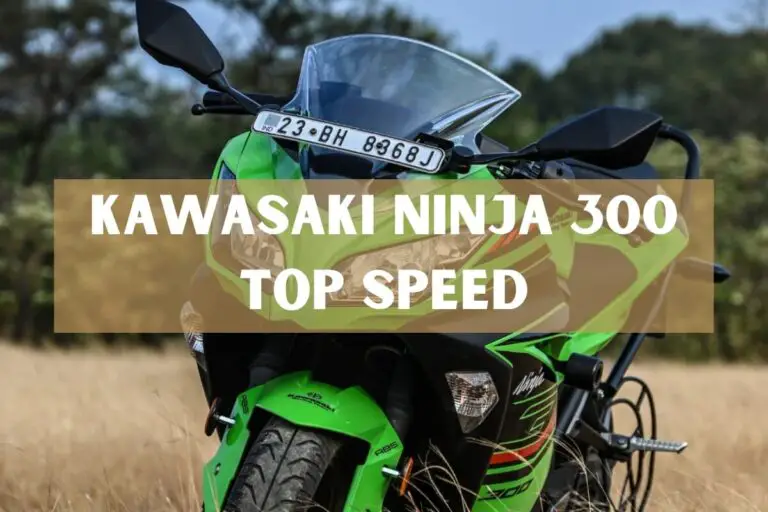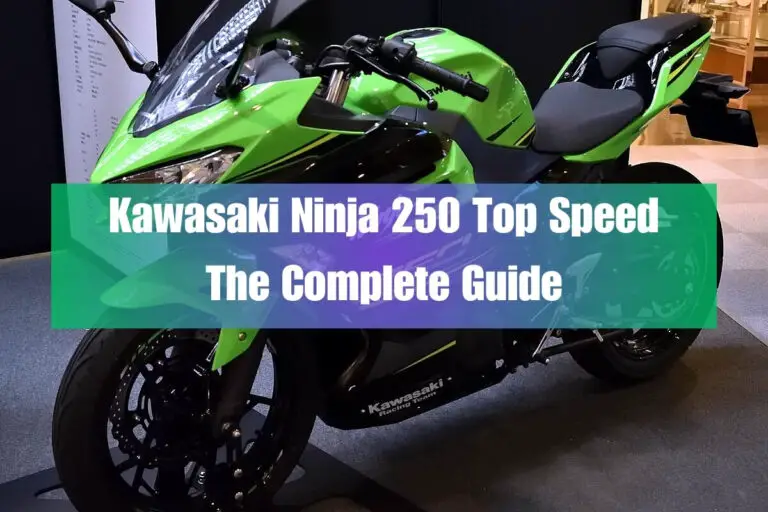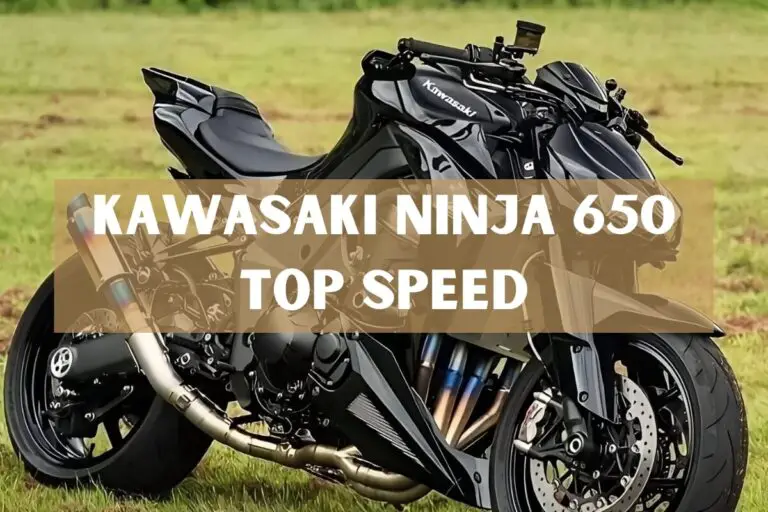Kawasaki 1000 Ninja Top Speed: Making More Faster
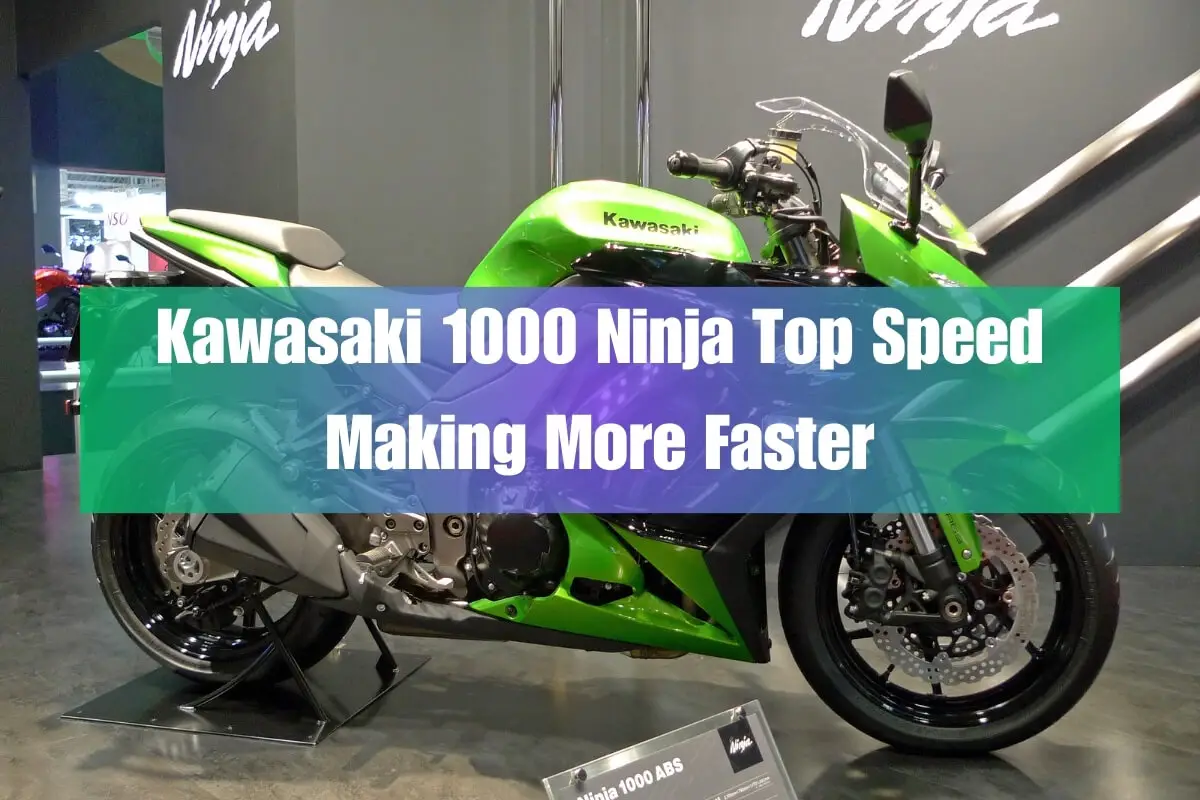
Speed enthusiasts and adrenaline junkies, get ready to be blown away! Today, we’re diving into the realm of pure exhilaration with the Kawasaki 1000 Ninja, a motorcycle that pushes the boundaries of performance and leaves a trail of astonishment in its wake. If you’re wondering, “What is the Kawasaki 1000 Ninja top speed?” – buckle up, because we’re about to unravel the jaw-dropping numbers and the engineering prowess behind this speed demon.
The Kawasaki Ninja 1000, also known as the Ninja 1000SX, is a sport-touring motorcycle that has captured the hearts of riders worldwide. With its potent 1,043cc inline-four engine, aerodynamic design, and cutting-edge technology, this bike isn’t just a speed machine – it’s a masterpiece of engineering that demands respect on the open road.
Bike Model Overview
Bike Model Introduction
The Kawasaki Ninja 1000 traces its roots back to the early 2000s when Kawasaki introduced the iconic Ninja lineup. Over the years, the Ninja series has undergone numerous refinements, with each iteration pushing the envelope of performance and rider experience. The Ninja 1000, introduced in 2011, was a game-changer, combining the raw power of a superbike with the comfort and versatility of a touring motorcycle.
Pricing and Availability
As of 2024, the Kawasaki Ninja 1000 is available in most major markets worldwide. In the United States, the base model carries an MSRP of $13,699, making it an attractive option for riders seeking a high-performance machine without breaking the bank. Availability may vary by region, so it’s best to check with your local Kawasaki dealership.
Key Features and Specifications
The Kawasaki Ninja 1000 is a true force to be reckoned with, boasting an impressive array of features and specifications:
- 1,043cc liquid-cooled, inline-four engine producing 140 horsepower and 111 Nm of torque
- Lightweight aluminum backbone frame for exceptional handling
- Advanced electronics, including traction control, anti-lock brakes, and power modes
- Adjustable windshield and ergonomic seating for long-distance comfort
- Aggressive styling with sharp lines and aerodynamic fairings
Performance
Top Speed: How Fast Can It Go?
Now, let’s address the burning question: “What is the Kawasaki 1000 Ninja top speed?” According to Kawasaki, the Ninja 1000 has an estimated top speed of 155.34 miles per hour (250 kilometers per hour). However, real-world tests and reviews have shown that it can push even further, with some riders reporting top speeds exceeding 160 mph (257 km/h) under optimal conditions.
The key to the Ninja 1000’s blistering top speed lies in its powerful engine, aerodynamic design, and advanced electronics. The 1,043cc inline-four powerplant delivers an exhilarating surge of torque and horsepower, propelling the bike forward with relentless force. Meanwhile, the sleek fairings and aerodynamic elements help reduce drag, allowing the motorcycle to slice through the air with minimal resistance.
Acceleration: 0-60mph Time and More
While top speed is undoubtedly impressive, acceleration is equally crucial for an adrenaline-fueled riding experience. The Kawasaki Ninja 1000 doesn’t disappoint in this department either. According to independent tests, the bike can sprint from 0 to 60 mph (0 to 96 km/h) in a mere 2.8 seconds – a feat that will leave you breathless and craving for more.
But that’s not all; the Ninja 1000 also boasts impressive quarter-mile times, with some riders reporting sub-10-second passes at over 140 mph (225 km/h). This level of acceleration is courtesy of the bike’s robust torque delivery and refined gearbox, ensuring seamless power delivery and lightning-quick gear changes.
Riding Experience: Handling, Suspension, and Brakes
While raw power and speed are undoubtedly alluring, a truly exceptional riding experience requires a perfect balance of handling, suspension, and braking. The Kawasaki Ninja 1000 excels in these areas, delivering a confidence-inspiring ride that will leave you grinning from ear to ear.
The bike’s lightweight aluminum frame and rigid chassis provide exceptional responsiveness and stability, allowing you to carve through corners with precision and confidence. The suspension setup, featuring an inverted fork and horizontal back-link rear suspension, offers a plush yet controlled ride, soaking up bumps and undulations with ease.
When it comes to stopping power, the Ninja 1000 doesn’t disappoint. Dual 300mm front discs with radial-mount calipers and a 250mm rear disc, combined with Kawasaki’s Intelligent Anti-lock Brake System (KIBS), ensure consistent and reliable braking performance, even in the most demanding situations.
Technical Specifications (In Table Format)
To give you a comprehensive overview of the Kawasaki Ninja 1000’s technical specifications, we’ve compiled a detailed table:
| Specification | Details |
|---|---|
| Engine | 1,043cc, 4-stroke, In-Line Four, DOHC, 16-valve, liquid-cooled |
| Bore x Stroke | 77.0 x 56.0mm |
| Compression Ratio | 11.8:1 |
| Fuel System | DFI with 38mm Keihin throttle bodies (4) and oval sub-throttles |
| Transmission | 6-speed, return shift |
| Final Drive | Sealed chain |
| Front Suspension | 41mm inverted cartridge fork with stepless compression and rebound damping, adjustable spring preload / 4.7 in wheel travel |
| Rear Suspension | Horizontal back-link with stepless rebound damping, remotely adjustable spring preload / 5.7 in wheel travel |
| Front Tire | 120/70 ZR17 |
| Rear Tire | 190/50 ZR17 |
| Front Brakes | Dual 300mm discs with radial-mount 4-piston monobloc calipers, KIBS (Kawasaki Intelligent Anti-lock Brake System) |
| Rear Brakes | Single 250mm disc with single-piston caliper, KIBS (Kawasaki Intelligent Anti-lock Brake System) |
| Frame Type | Aluminum backbone |
| Rake/Trail | 24.0°/3.9 in |
| Overall Length | 82.7 in |
| Overall Width | 32.5 in |
| Overall Height | 46.9 in / 48.2 in (windshield high) |
| Ground Clearance | 5.3 in |
| Seat Height | 32.3 in |
| Curb Weight | 513.8 lb / 516.0 lb (50-State Model) |
| Fuel Capacity | 5.0 gal |
| Wheelbase | 56.7 in |
| Electronics | Economical Riding Indicator, Electronic Cruise Control, Kawasaki TRaction Control (KTRC), Kawasaki Intelligent Anti-lock Brake System (KIBS), Power Modes, Kawasaki Cornering Management Function (KCMF), Kawasaki Quick Shifter (KQS) (Up-Down), IMU-Enhanced Chassis Orientation Awareness |
What Owners Say
No review of a motorcycle would be complete without hearing from the people who have experienced it firsthand – the owners themselves. Here’s a glimpse of what Kawasaki Ninja 1000 owners have to say:
Positive Reviews
“The Ninja 1000 is an absolute blast to ride! The power delivery is smooth and linear, making it easy to control, yet it has more than enough punch to leave you grinning from ear to ear. The handling is precise, and the suspension soaks up bumps like a champ.” – John D., Seattle
“I’ve ridden a lot of bikes, but the Ninja 1000 stands out for its versatility. It’s a capable sport-tourer that can devour mile after mile on the highway, yet it’s also an absolute hoot in the twisties. The blend of performance and comfort is simply unbeatable.” – Sarah M., Los Angeles
Negative Reviews
While the Kawasaki Ninja 1000 has received widespread acclaim, no motorcycle is perfect. Here are a few common complaints from owners:
“The fuel tank capacity could be better. I find myself stopping for gas more often than I’d like on longer trips.” – Mike T., Chicago
“The stock exhaust note is a bit on the tame side for my liking. An aftermarket exhaust would really unleash the beast within this bike.” – Alex R., Miami
Common Complaints and Praise
After scouring through numerous owner reviews, a few common themes emerged. Many owners praised the Ninja 1000’s comfortable ergonomics, smooth power delivery, and confidence-inspiring handling. On the flip side, some felt that the fuel tank capacity could be improved, and the exhaust note could be more aggressive.
Comparison
Top Speed Comparison with Competitors
When it comes to top speed, the Kawasaki Ninja 1000 holds its own against some of the fiercest competitors in its class. Here’s how it stacks up:
- Ducati Hypermotard 950: Top speed of 139 mph (224 km/h)
- BMW S 1000 RR: Top speed of 193 mph (310 km/h)
- Suzuki GSX-S1000F: Top speed of 156 mph (251 km/h)
- Honda CB1000R+: Top speed of 165 mph (265 km/h)
As you can see, the Ninja 1000’s top speed of 155-160 mph (250-257 km/h) places it firmly in the upper echelon of its class, outpacing many of its rivals while trailing behind the track-focused BMW S 1000 RR.
Feature Comparison with Similar Bikes
Beyond top speed, it’s essential to consider the overall feature set when comparing motorcycles. Here’s how the Kawasaki Ninja 1000 stacks up against some of its closest competitors:
- Yamaha FZ1: The FZ1’s 998cc engine is more comfortable on faster roads than in the city, while the Ninja 1000’s 1043cc engine is designed for commuting and canyon carving. The Ninja 1000 also has an aluminum backbone frame and suspension that gives it excellent handling.
- Suzuki GSX-S1000GT+: Both the Ninja 1000 and GSX-S1000GT+ are sport-touring motorcycles with four-cylinder engines around 1000cc. However, the Kawasaki’s engine is larger at 1,043cc, while the Suzuki’s is 999cc. According to reviews, the Kawasaki is sportier, especially in tight corners, while the Suzuki leans more towards touring.
Overall, the Kawasaki Ninja 1000 strikes a fine balance between performance and versatility, making it a compelling choice for riders seeking a well-rounded machine.
Modifications and Upgrades
While the Kawasaki Ninja 1000 is a potent machine straight from the factory, some riders may want to explore modifications and upgrades to further enhance its capabilities.
Best Modifications to Increase Top Speed
For those seeking to push the boundaries of the Ninja 1000’s top speed, a few key modifications can make a significant difference:
- Exhaust System Upgrade: Replacing the stock exhaust with a high-performance aftermarket system can unlock additional horsepower and torque, leading to improved acceleration and potentially higher top speeds.
- Engine Tuning: ECU tuning and remapping can optimize the engine’s power delivery, allowing it to rev higher and produce more power at the top end.
- Aerodynamic Improvements: Adding aerodynamic enhancements like a belly pan or rear hugger can reduce drag, enabling the bike to reach higher top speeds more efficiently.
Recommended Upgrades for Performance and Comfort
Beyond top speed, there are numerous upgrades that can enhance the overall performance and comfort of the Kawasaki Ninja 1000:
- Suspension Upgrades: Installing high-quality aftermarket suspension components can improve handling, stability, and ride quality, especially when pushing the bike to its limits.
- Brake Upgrades: Upgrading to higher-performance brake pads and fluids can improve braking power and feel, ensuring you can shed speed with confidence.
- Ergonomic Enhancements: Adding adjustable rearsets, handlebars, or seats can tailor the bike’s ergonomics to your specific body type, improving comfort on long rides.
- Lighting Upgrades: Replacing the stock headlights with brighter LED units can improve visibility and safety, especially during night rides or in low-light conditions.
Pros and Cons
Like any motorcycle, the Kawasaki Ninja 1000 has its strengths and weaknesses. Here, we’ve compiled a list of pros and cons to help you make an informed decision:
Pros
- Blistering top speed and acceleration
- Excellent handling and stability
- Comfortable ergonomics for long-distance touring
- Advanced electronics and rider aids
- Aggressive, eye-catching styling
- Relatively affordable price point
Cons
- Fuel tank capacity could be better for extended touring
- Stock exhaust note may be too muted for some riders
- Weight can be a bit high for dedicated track use
- Limited storage space for touring accessories
- Seat height may be too tall for shorter riders
- Windshield could offer better wind protection
Alternatives
While the Kawasaki Ninja 1000 is an exceptional machine, it may not be the perfect fit for everyone. Here are a few alternatives to consider:
Top Alternatives in the Same Class
- Suzuki GSX-S1000GT+: A more touring-focused option with a slightly smaller engine but more luggage capacity and wind protection.
- Triumph Speed Triple 1200 RS: A naked sportbike with a potent 1,160cc triple-cylinder engine and aggressive styling.
- BMW S 1000 XR: A capable sport-tourer with a powerful inline-four engine and advanced electronics.
Why You Might Consider a Different Bike
While the Kawasaki Ninja 1000 excels in many areas, there are a few reasons why you might consider a different motorcycle:
- Dedicated Track Use: If you primarily plan to ride on the track, a more focused, lighter-weight superbike might be a better choice.
- Extensive Touring: If you frequently embark on long-distance tours with a passenger and a lot of luggage, a larger touring-specific motorcycle may be more suitable.
- Off-Road Adventures: If your riding adventures take you off the beaten path, an adventure-touring or dual-sport motorcycle would be a better fit.
- Budget Constraints: While the Ninja 1000 is relatively affordable, some riders may prefer a more budget-friendly option, especially if they’re just starting out.
Who’s It For?
The Kawasaki Ninja 1000 is a remarkably versatile machine, but it’s not a one-size-fits-all solution. Here’s a breakdown of who this bike is ideally suited for:
Who Should Buy This Bike
- Sport-touring enthusiasts seeking a blend of performance and comfort
- Commuters looking for a capable and fun daily rider
- Riders seeking a motorcycle that can handle canyon carving and long-distance trips with ease
- Speed junkies who want a bike that can deliver thrilling top-end performance
- Tall riders who appreciate the bike’s comfortable ergonomics and seating position
Who Should Not Buy This Bike
- Riders primarily focused on track days or dedicated racing
- Short riders who may find the seat height too tall
- Riders planning extensive two-up touring with a lot of luggage
- Those seeking a more budget-friendly option
- Riders who prioritize off-road capability over on-road performance
Ideal Use Cases and Riding Styles
The Kawasaki Ninja 1000 shines in a variety of riding scenarios, including:
- Sport-touring: Its potent engine, comfortable ergonomics, and advanced electronics make it an excellent choice for long-distance touring while still delivering an exhilarating ride.
- Canyon carving: With its precise handling, responsive engine, and agile chassis, the Ninja 1000 is a blast to ride on twisty back roads and mountain passes.
- Commuting: The bike’s smooth power delivery, upright seating position, and manageable size make it a practical choice for daily commuting, especially in urban environments.
- Weekend adventures: Whether it’s a solo ride or a group outing, the Ninja 1000’s blend of performance and comfort makes it an ideal companion for weekend warriors seeking thrills and exploration.
- Track days (with modifications): While not designed solely for track use, the Ninja 1000 can be transformed into a capable track machine with the right modifications, such as suspension upgrades and weight reduction.
Troubleshooting
Like any high-performance machine, the Kawasaki Ninja 1000 may encounter a few common issues over time. Here are some tips and tricks for troubleshooting and maintaining your bike:
Common Issues and Their Fixes
- Clutch Slipping: If you experience clutch slipping, it may be due to worn clutch plates or improper adjustment. Replacing the clutch pack or adjusting the clutch cable can resolve this issue.
- Electrical Gremlins: Intermittent electrical issues, such as flickering lights or non-responsive electronics, can often be traced back to loose or corroded connections. Inspecting and cleaning the electrical connections can help eliminate these gremlins.
- Suspension Woes: Over time, suspension components can wear out, leading to a harsh or unsettled ride. Replacing fork seals, shock absorbers, or suspension fluids can restore the bike’s plush and controlled ride quality.
- Brake Issues: Squealing, pulsing, or spongy brakes can be indicators of worn brake pads, warped rotors, or air in the brake lines. Addressing these issues promptly is crucial for maintaining optimal braking performance.
Maintenance Tips and Tricks
Proper maintenance is key to ensuring your Kawasaki Ninja 1000 runs at its best and maintains its value over time. Here are a few tips and tricks:
- Follow the Service Schedule: Adhering to the manufacturer’s recommended service intervals is essential for keeping your bike in top shape.
- Use High-Quality Fluids: Invest in high-quality engine oil, brake fluid, and coolant to ensure optimal performance and protection for your motorcycle’s components.
- Inspect and Replace Wear Items: Regularly inspect and replace wear items like tires, brake pads, and chains to maintain safety and performance.
- Clean and Lube: Keeping your bike clean and well-lubricated can prevent premature wear and tear, ensuring smooth operation and prolonging the life of various components.
- Consider Aftermarket Protection: Installing aftermarket protection like frame sliders, engine guards, and axle sliders can help mitigate damage in the event of a drop or tip-over.
Final Thoughts and Recommendation
The Kawasaki Ninja 1000 is a remarkable machine that strikes a perfect balance between exhilarating performance and everyday practicality. With its blistering top speed, responsive handling, and comfortable ergonomics, this bike is a true jack-of-all-trades that can tackle everything from long-distance touring to adrenaline-fueled canyon carving.
If you’re in the market for a motorcycle that can deliver an unforgettable riding experience while remaining accessible and versatile, the Kawasaki Ninja 1000 should be at the top of your list. Its blend of power, comfort, and technology make it a compelling choice for riders seeking a well-rounded machine that can keep up with their diverse riding needs.
However, it’s essential to consider your specific requirements and riding style before making a purchase decision. If you’re primarily focused on track days or extensive two-up touring, there may be better options available that cater more specifically to those needs.
Regardless of your decision, one thing is certain: the Kawasaki Ninja 1000 is a true gem in the world of high-performance motorcycles, offering a thrilling ride that will leave you craving for more with every twist of the throttle.
